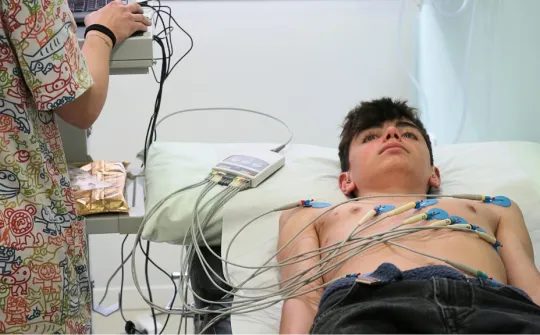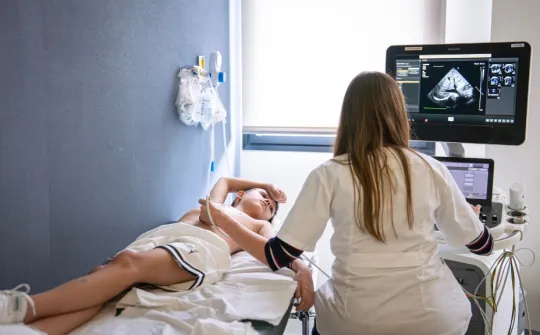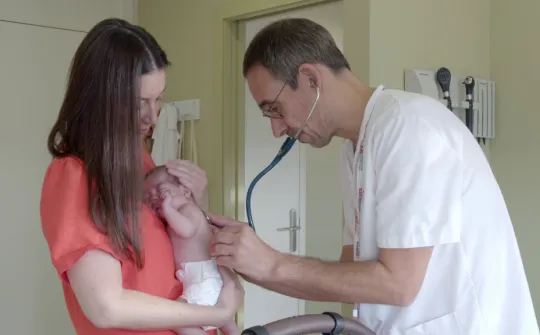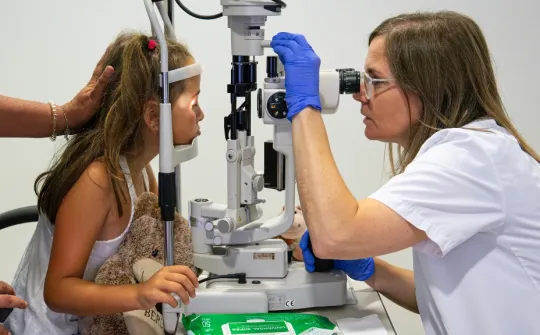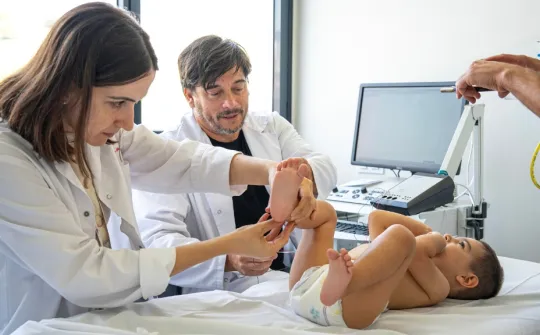SJD and Hospital Clínic create a centre to carry out robotic heart surgery on children and young people
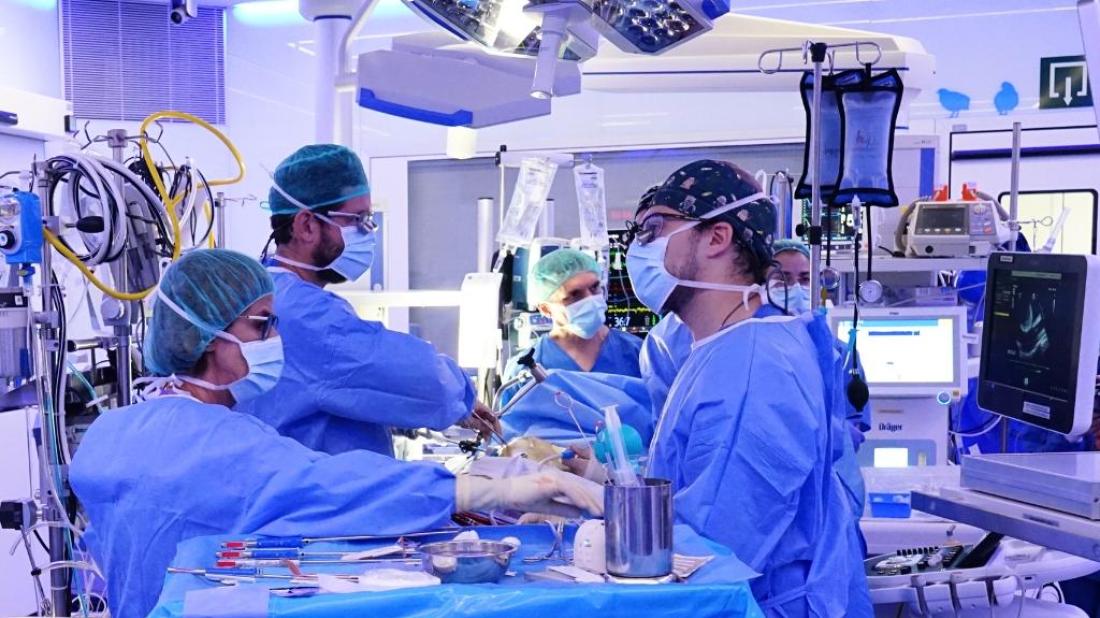
The facility is the first in Spain to use this technique on pediatric patients with congenital cardiopathies, who previously had to undergo open heart surgery.
The SJD Barcelona Children's Hospital and Hospital Clínic Barcelona have created the Congenital Cardiopathy Centre to offer comprehensive care to children born with heart malformations throughout their entire life. The SJD-Clínic Congenital Cardiopathy Centre Barcelona was presented by: the Generalitat de Catalunya's Minister of Health, Manel Balcells; the Director of the Hospital Clínic Cardiovascular Institute, Marta Sitges; the Head of the Cardiovascular Surgery Department at the SJD Barcelona Children's Hospital, Stefano Congiu; and Daniel Pereda, Director of the new facility and consultant in the Cardiovascular Surgery Department at Hospital Clínic.
Each year, 600 babies are born in Catalonia with a congenital cardiopathy, whether relating to structural heart problems (in the chambers or valves, for example) or relating to the great vessels in the chest. A severe cardiopathy is involved in 30% of cases. Thanks to scientific progress in the last decades, around 95% of these children make it to adulthood. However, they have very specific needs.
As such, the Congenital Cardiopathy Centre, a joint effort by the SJD Barcelona Children's Hospital and Hospital Clínic Barcelona, was born. Their goal is to ensure the same team of professionals treats and monitors the patient throughout their life, as successful management of cardiovascular disease patients is rooted in high-quality, multidisciplinary caregiving with a long-term monitoring strategy to ensure continued care well into adulthood. That is why having a specialised, integrated facility with a transversal vision is vital to improving the quality of healthcare for these patients.
The new centre has two branches: one at the SJD Barcelona Children's Hospital, and the other at Hospital Clínic. Together, they have a complete and complementary service offering, also boasting an integrated team of 23 professionals from across Cardiovascular Surgery, Cardiology, Pediatrics and Anesthesiology.
First minimally invasive heart surgery operations on children in Spain
The creation of this centre—fruit of the strategic alliance between SJD and Hospital Clínic—will allow the pediatric population to gain access to surgical techniques that, until now, had only been used on adult patients. These techniques involve minimally invasive thoracoscopies and robotic surgery. Until now, children and young people with congenital heart defects had to undergo open heart surgery, which involved a much longer post-operative recovery period, as well as a more significant esthetic impact.
The new Congenital Cardiopathy Centre has already carried out five of these minimally invasive procedures on infants. In three of those five cases, professionals opted for a thoracoscopy, which involves making small incisions to the chest and inserting a small video scope to see both the surgical area and the surgical instruments needed for the operation. The first girl to undergo this technique had a heart tumour that needed to be removed. The youngest patient to receive surgical treatment at the new centre so far was six years old.
First application of robotic surgery on children
In the two remaining cases, professionals chose to perform robotic heart surgery. The first pediatric patient to undergo robot-assisted heart surgery was a 13-year-old girl from the Basque Country with an ostium primum atrial septal defect (where both atria are connected) and a mitral valve defect. These malformations caused abnormal blood circulation within the patient's heart, leading to an imbalance that overloaded the right side of the heart. Over time, this led to heart failure.
Furthermore, this patient’s condition was aggravated by a high degree of scoliosis, making accessing the heart more difficult. As such, the surgical team decided to utilise robot-assisted surgery, which, through four small 8 mm incisions to the chest cavity, allowed them to insert a camera into the heart and see the surgical area and the surgical instruments needed to carry out the operation. Doing do allowed the medical team at the Congenital Cardiopathy Centre to both close the atrial septum connecting both heart chambers, and also repair the damaged mitral valve. The operation, which took place in November, took four hours and involved ten individual professionals.
The second patient to undergo this robot-assisted surgery was a 15-year-old boy who had previously been treated for an atrial septal defect with a catheterisation and then went on to develop an infection of the closure device (endocarditis).
Director of the facility, Daniel Pereda, explains that, when it comes to pediatric patients, robotic surgery is limited due to the age and physical size of patients, because surgical tools have been created and designed for adults. That is why surgeons only consider this option for older pediatric patients and teenagers.
The main candidates for this type of surgery are patients with the following diseases: atrial septal defect, when it cannot be resolved by catheterisation; mitral or tricuspid valve insufficiency; or cardiac tumours. The centre is predicted to perform minimally invasive robot-assisted surgery on a dozen patients each year, as well as 20 thoracoscopy surgical procedures.
